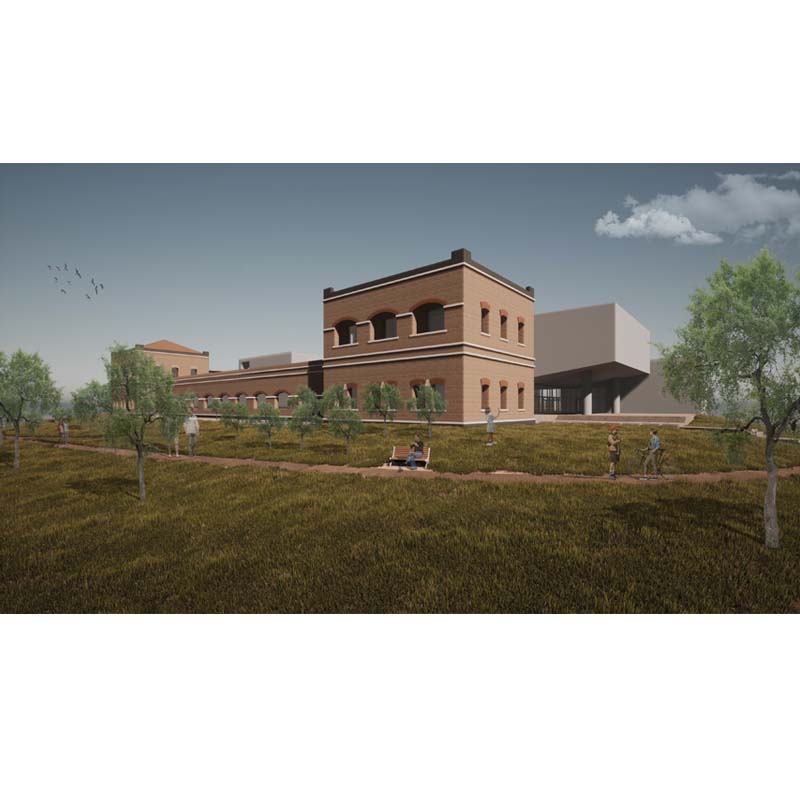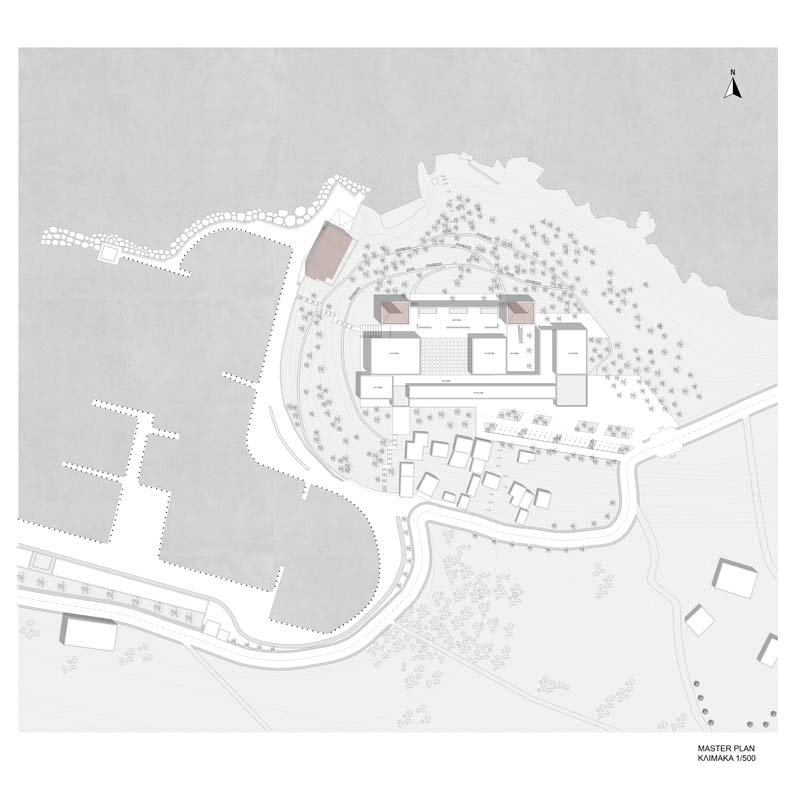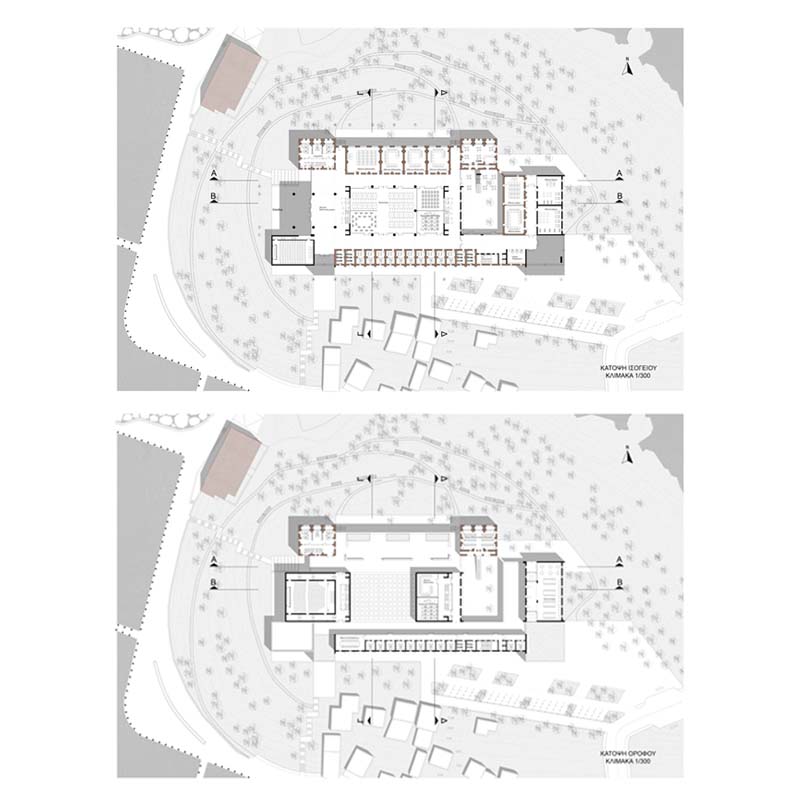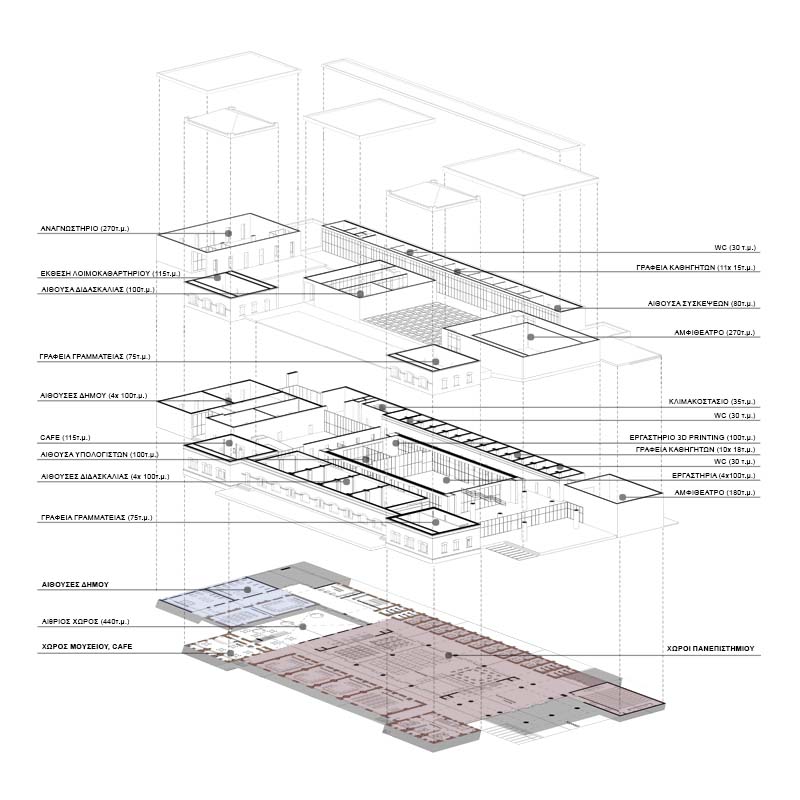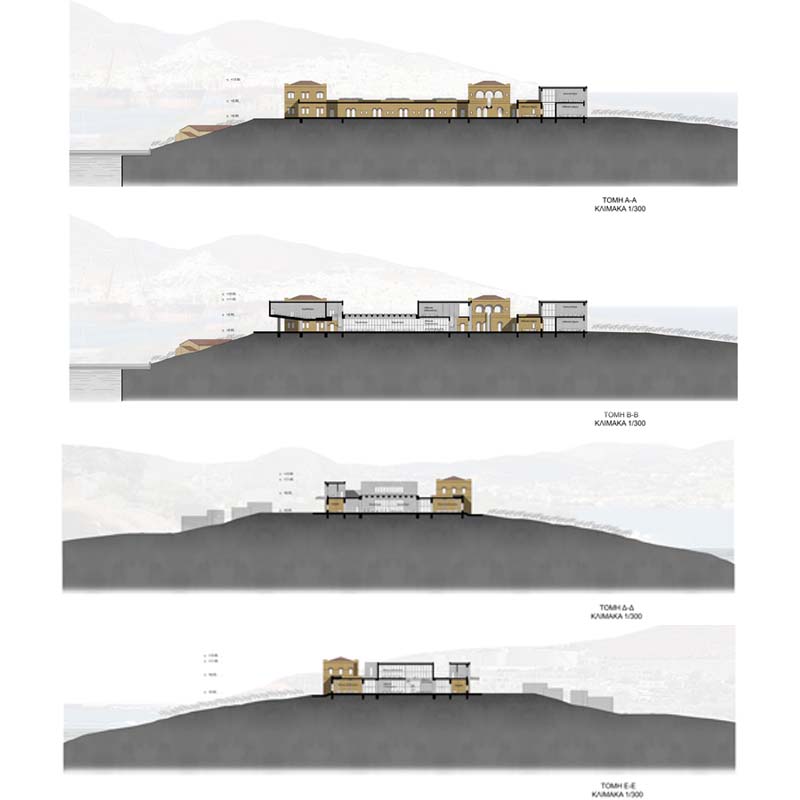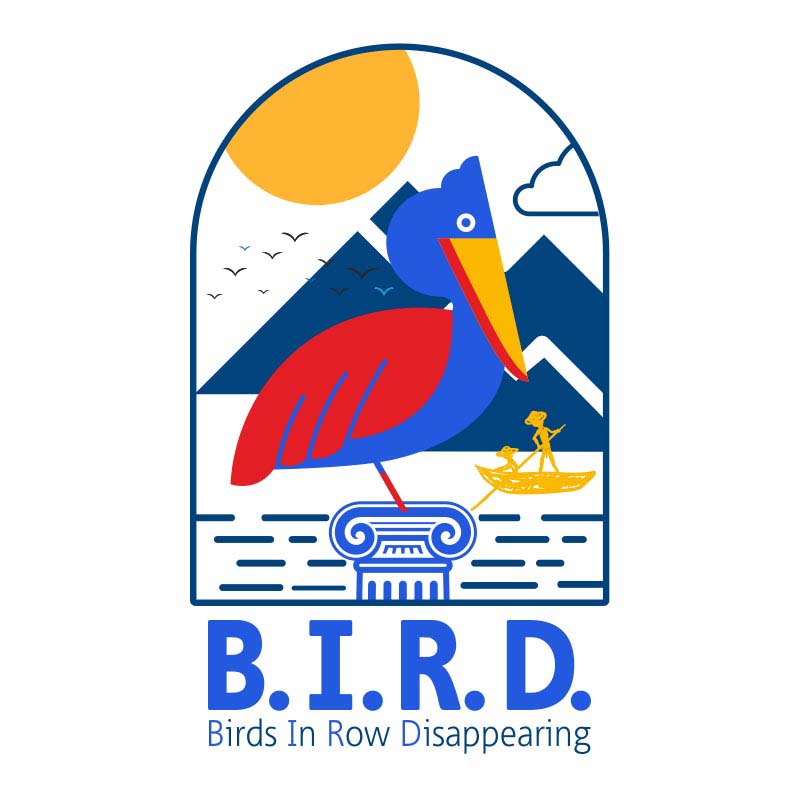

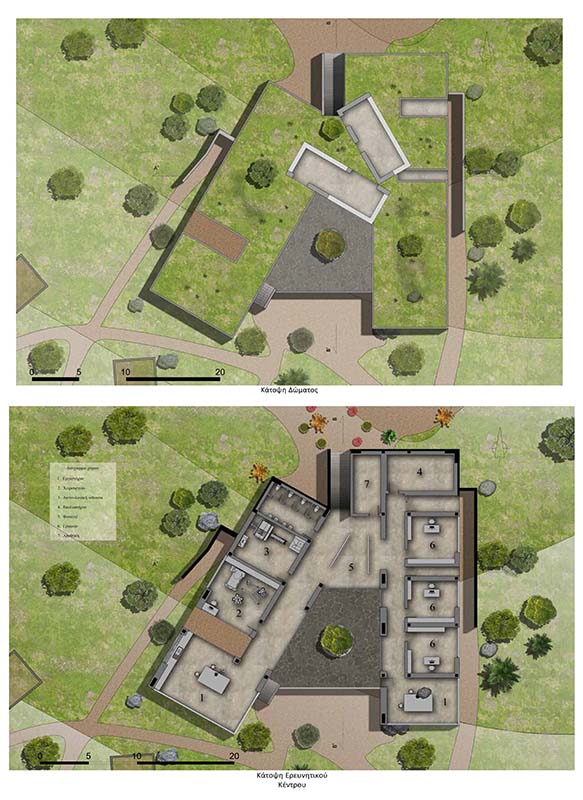

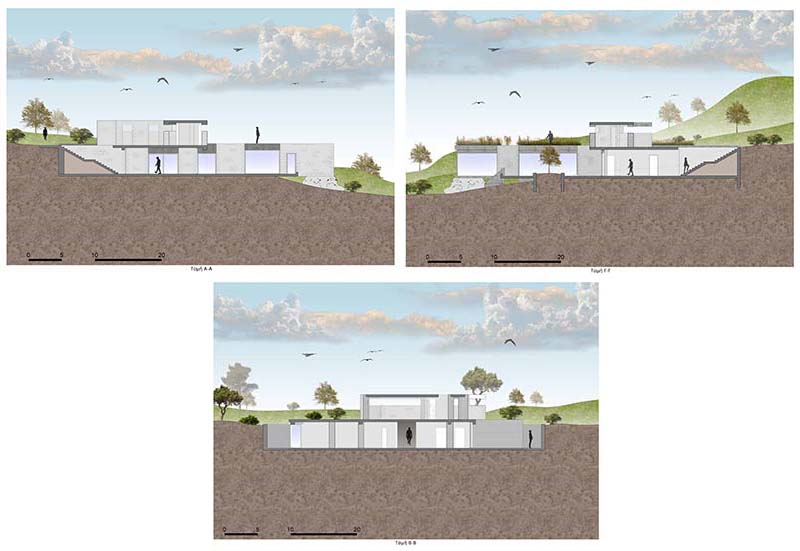

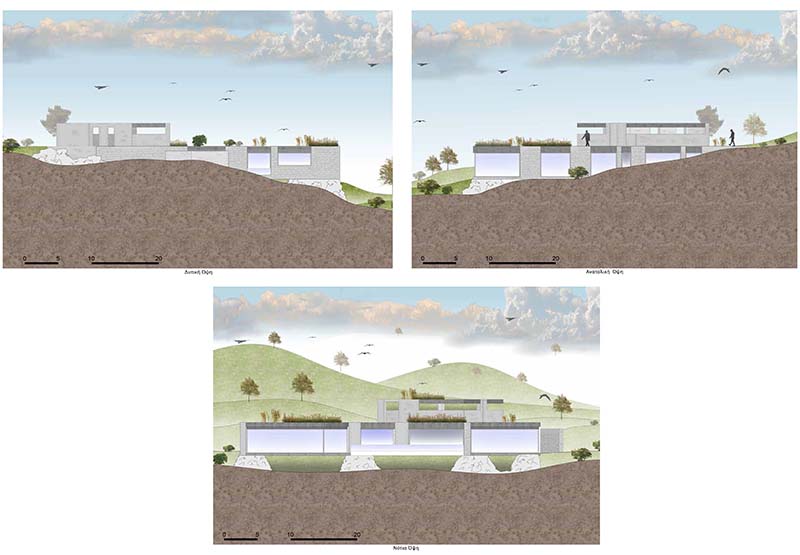

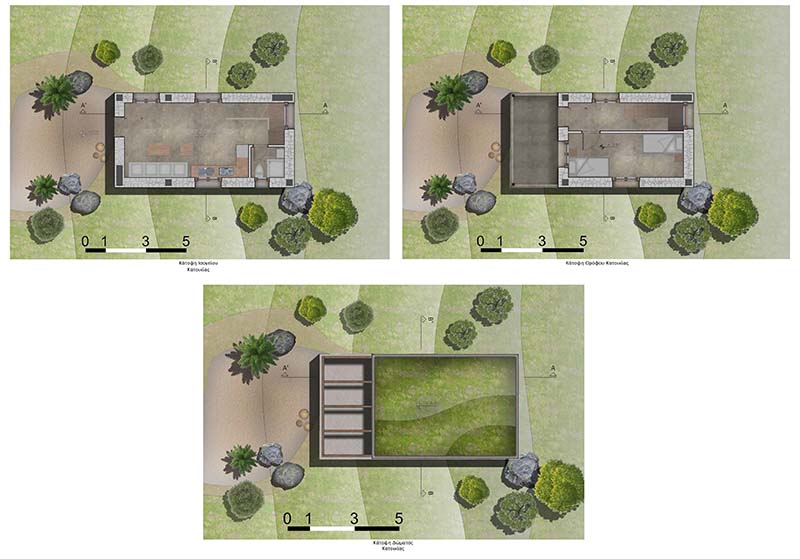

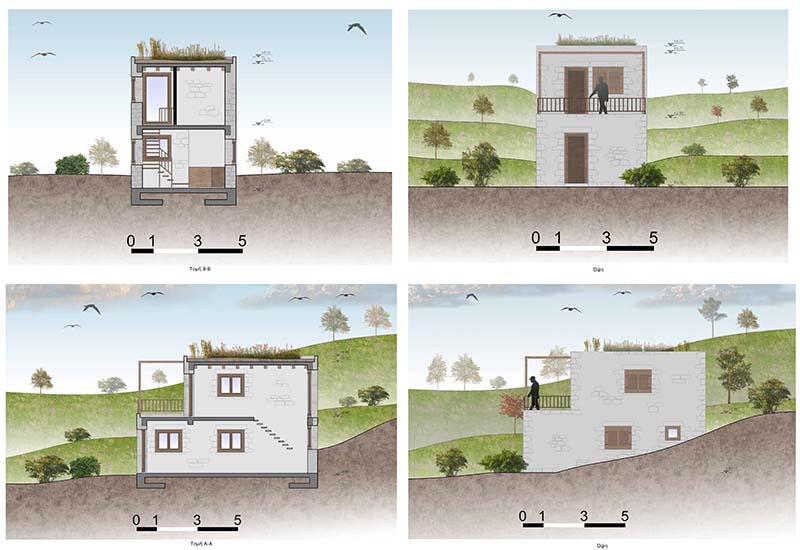

In 1962 lake Carla dried up, its flora and fauna were wiped out and with it its hidden civilization was buried. From 2010 until today efforts are being carried out for the recreation of this important wetland since the consequences on the ecosystem of the area were greater than the expected profit of its drainage.
The need for the protection and preservation of the cultural inheritance and avifauna that this wetland accommodates, which is the reason for its integration as a protected area (Natura), created the purpose for this particular thesis, project B.I.R.D. (Birds In Row Disappearing).
The purpose of this thesis is the creation of a research center for research and protection of the unique avifauna of the lake and the preservation of its civilization. Its construction site includes housing for permanent and seasonal researchers, and also volunteers. It also includes the necessary infrastructure for the best possible performance of the project. Located on the banks of lake Carla joining diagonal bisectors not only from the view of the lake but also from the mountain. Focusing on the construction details using materials from the area and roof planting in order for the building to adjust to the environment in combination with the tracing of the plan in order to allow the visitor to sink in and experience the cultural values of the lake, the effort made to advocate for the avifauna and the importance of this wetland over a period of time, so that it can once again become a spectacle of Thessaly. To unbury its culture, to respect its present and welcome its future.
Supervisor: Kanarelis Theoklis
Reference Number: 1014
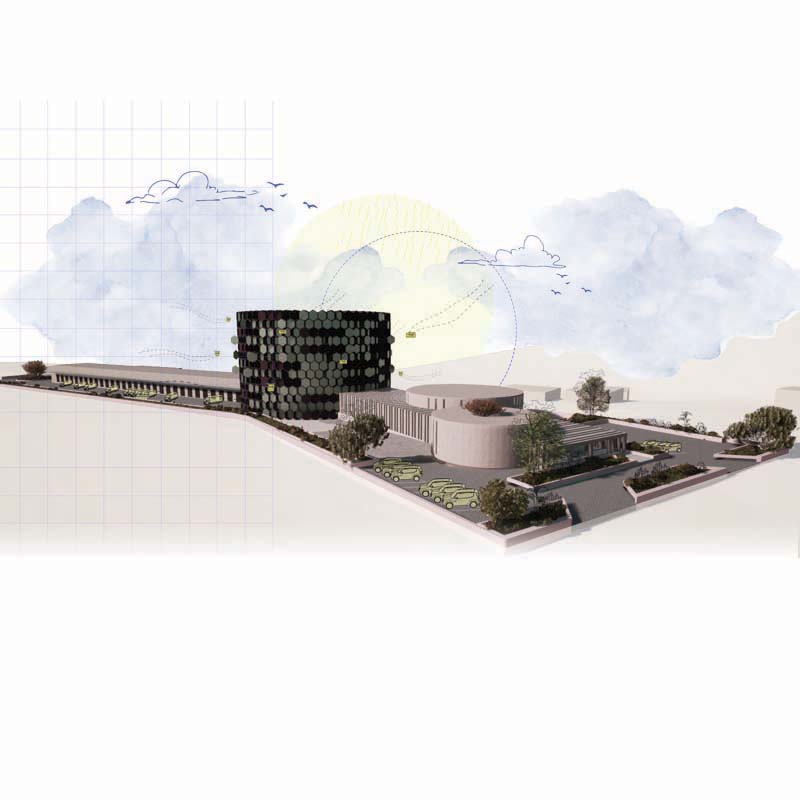



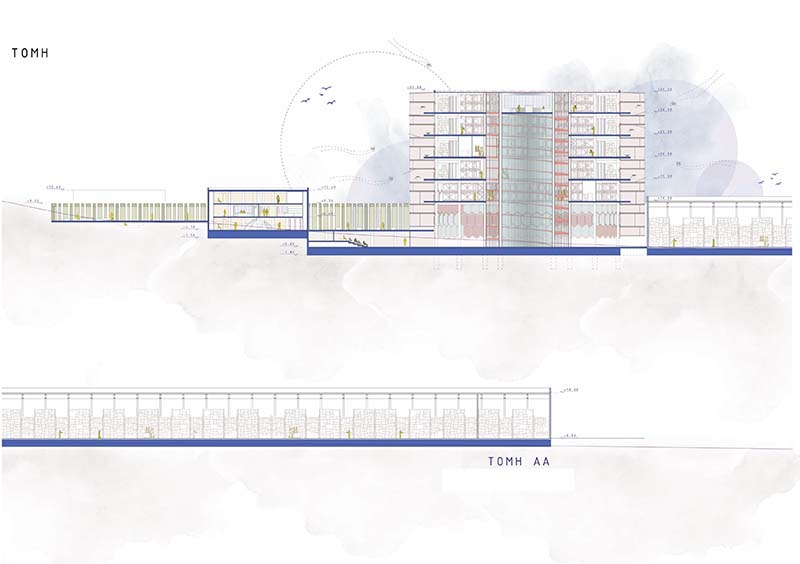

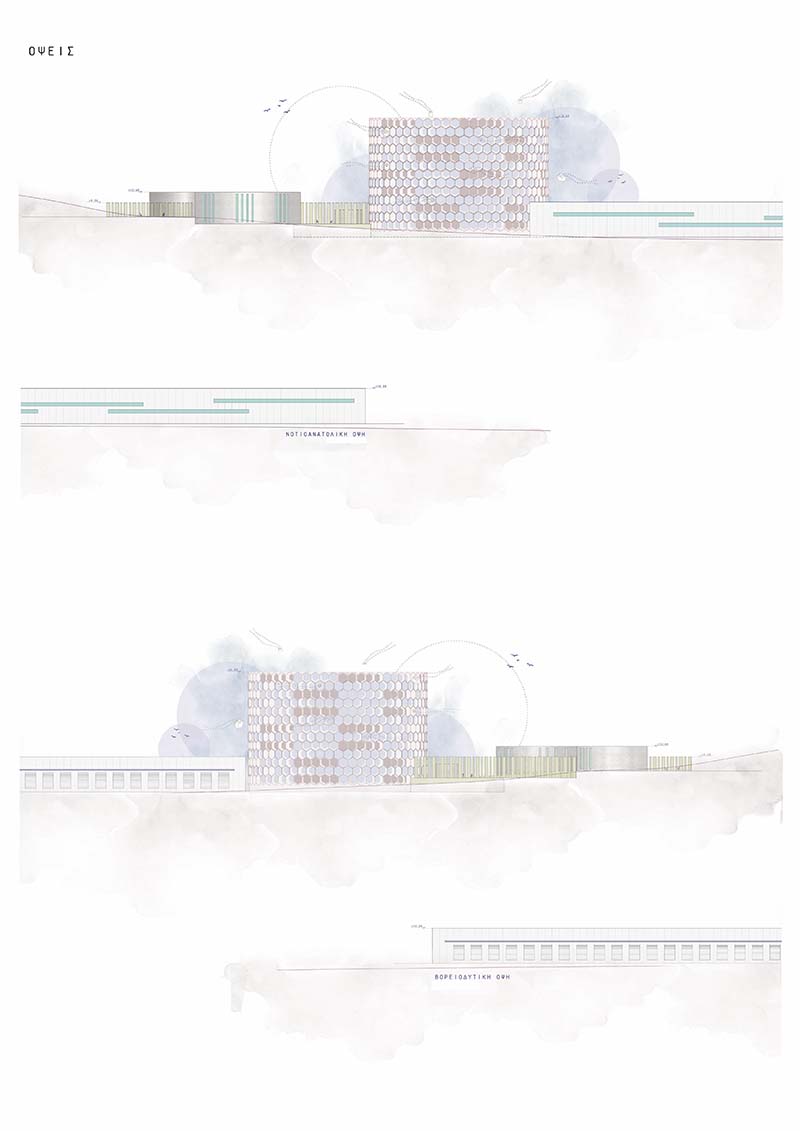

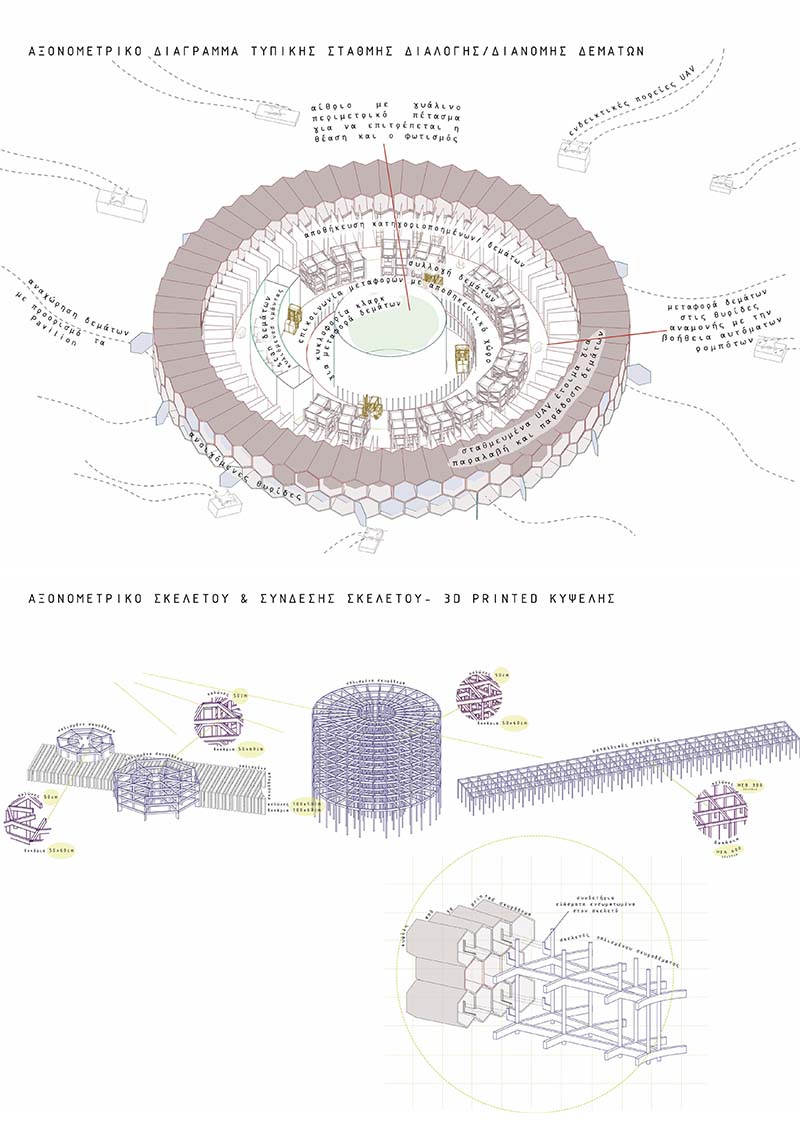

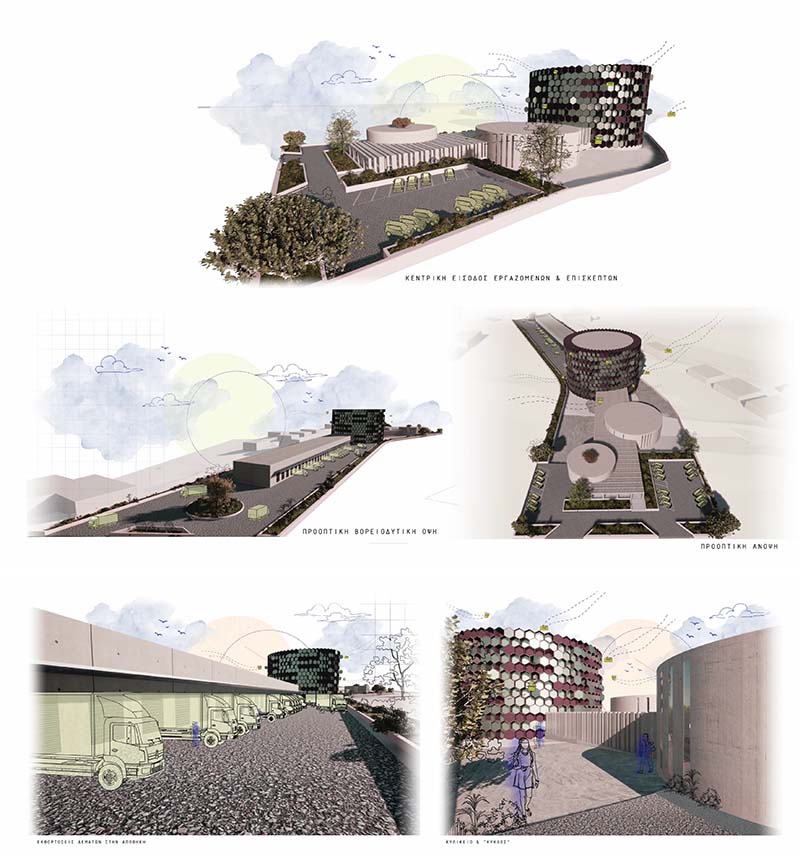

The new lifestyle and the development of technology have led people to invent new innovative processes to achieve a goal. Unmanned Aerial Vehicles (UAVs) are part of this innovation. Their use is not limited to cameras, which is the most common, but now extends to the transport of parcels.
The aim of the study is to design a network of supply chain support structures with the exclusive use of Unmanned Aircraft. Constructions are of two types. The first concerns the central building from which the unmanned aircrafts start and is located in the industrial area of Volos. The second type of construction is small-scale, serving individual distribution functions which are located at strategic points, within the urban fabric of the city.
The idea on which the project is based on is our new way of life and how drones combined with architecture are part of this new model. Considering that the largest volume of transport deliveries does not exceed 5 kg and their volume is manageable by a small device, i.e. UAVs, it was decided to propose their use as transport vehicles, which allows to achieve great benefits in terms of time and cost. In addition, this new infrastructure enables the development of other networks besides packet delivery for commercial purposes, such as an emergency health network between health centers and hospitals or citizen safety networks.
Issues studied are the new parameters for receiving parcels and transporting them to the delivery point and the connection with the city of Volos. The location of the central building is such that, at the same time, it is far from the urban fabric but through the distribution network that has been carried out it is directly connected to it, thus allowing coverage with the whole city.
Their varied capabilities make them some of the most modern technological tools ready to serve citizens in every possible way.
Supervisor: Psychogyios Dimitris
Reference Number: 1023
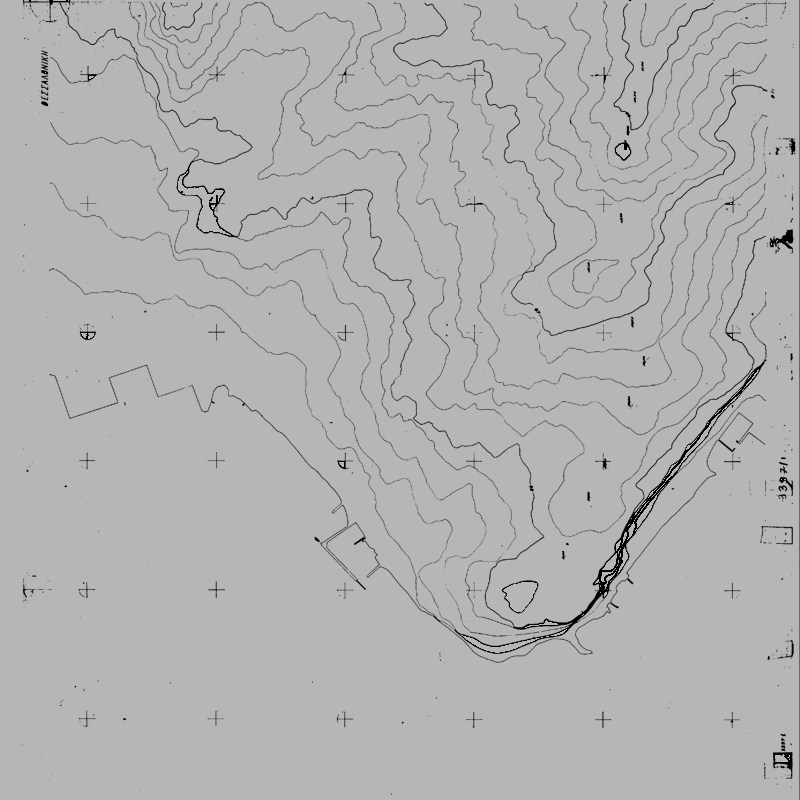

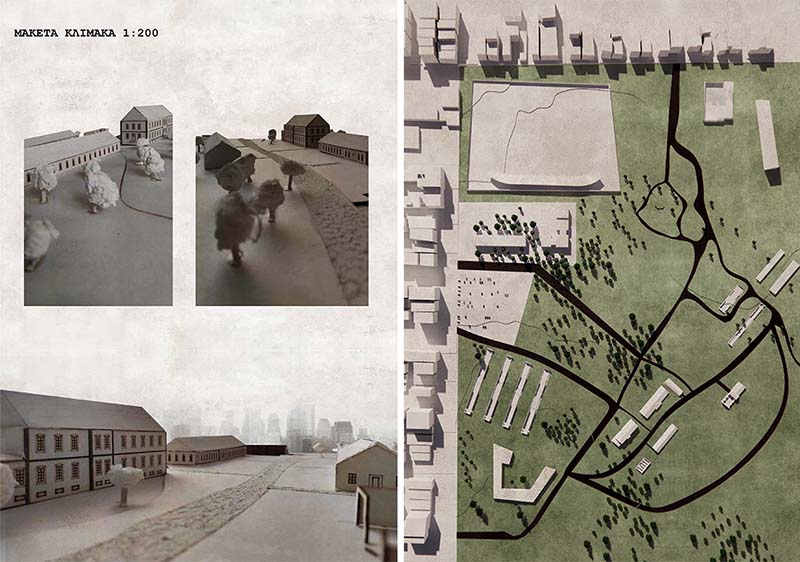

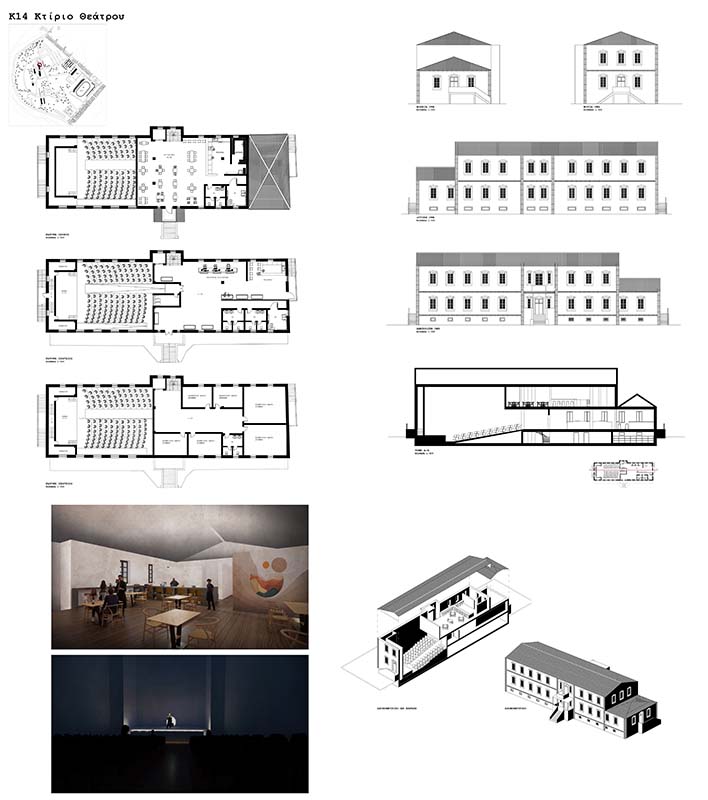

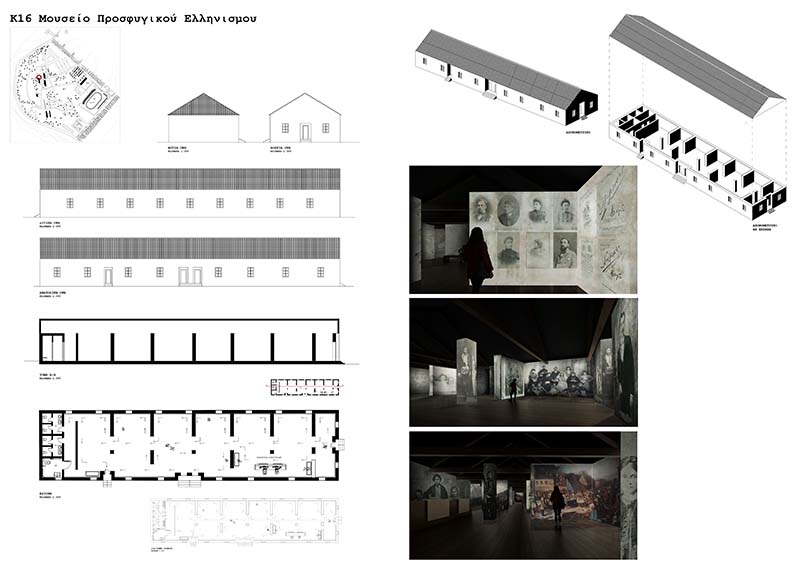

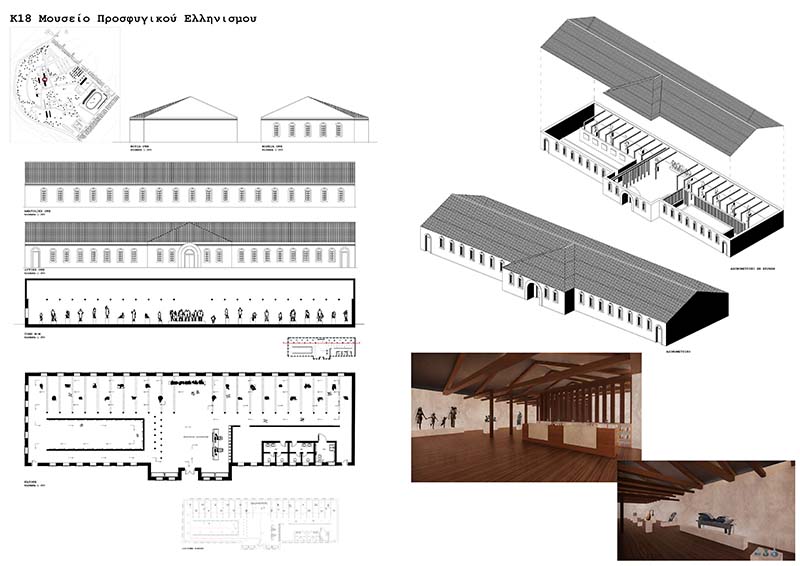

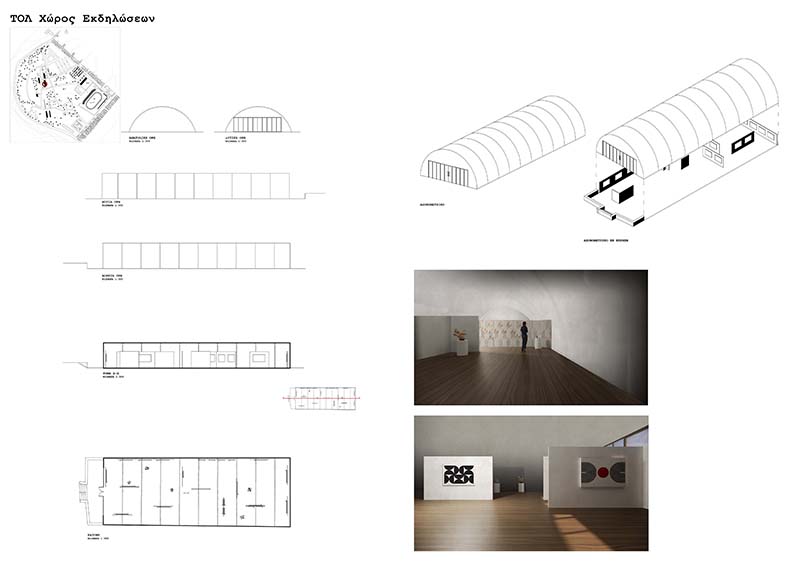

The study of the diploma thesis entitled “Activation of the Former Kodra Camp - Creation of a Cultural Center” by the students Vissara- kos Aristotelis and Douraki Evangelia and the supervising professor Mr. Mitroulias Georgios focuses on the former Kodra camp, in Thessaloniki more specifically on the edge of the “Karaburnaki” area Kalamaria which “spreads” over an area of more than 350 acres and is one of the few unstructured areas, which are still preserved within the urban complex of both Kalamaria and the wider area of Thessaloniki. A characteristic of this plot is its privileged location, as it combines direct contact with the sea but at the same time with the central market, which makes it one of the most accessible places for recreation. From time to time the former camp had occupied the local community with issues related to its reconstruction and the reuse of the volumes it includes as well as the construction of new buildings that would serve public benefit ac- tions. Despite this, little action has been taken with the result that the pre-existing volumes are not maintained and many of them have com- pletely collapsed. The thesis therefore proposes the creation of a cul- tural installation of a supra-local character that will include two mu- seums, a cinema, a theater and two event halls. The purpose of the study is to preserve and highlight the new cultural space and to be a pole of attraction for both the residents of the area and for visitors. In ad- dition, with the construction of the museums, the history of the for- mer camp and the Kalamaria region in general will become known, as for many years it was a place of refuge for people arriving from Asia Minor and the Pontus, while today it has turned into one of the most important suburbs city’s.
Keywords: Kalamaria, former camps, cultural centers, museums, cultural centers
Supervisor: Mitroulias Giorgos
Reference Number: 1026
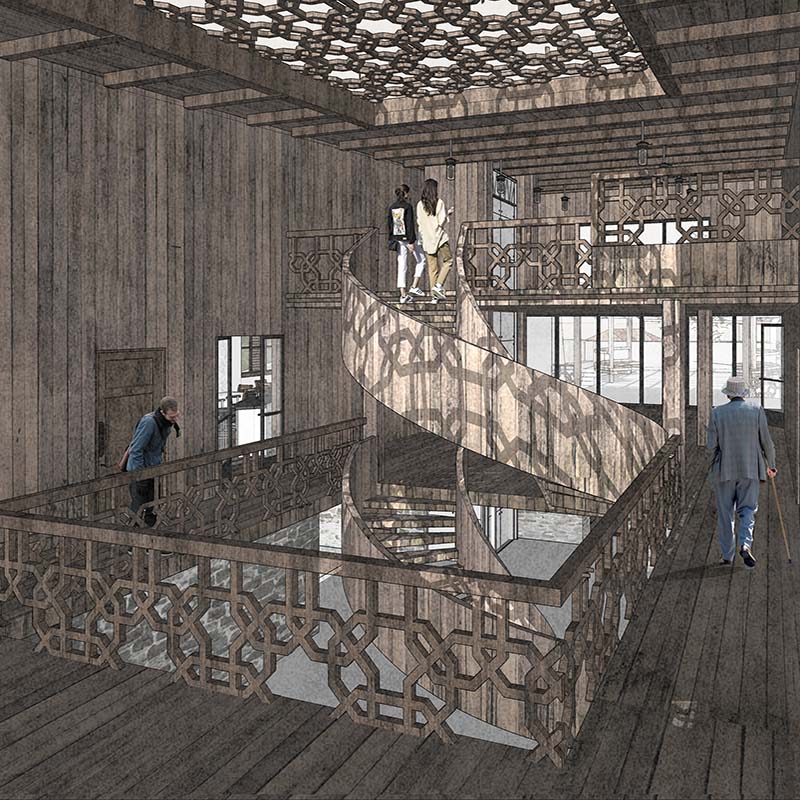

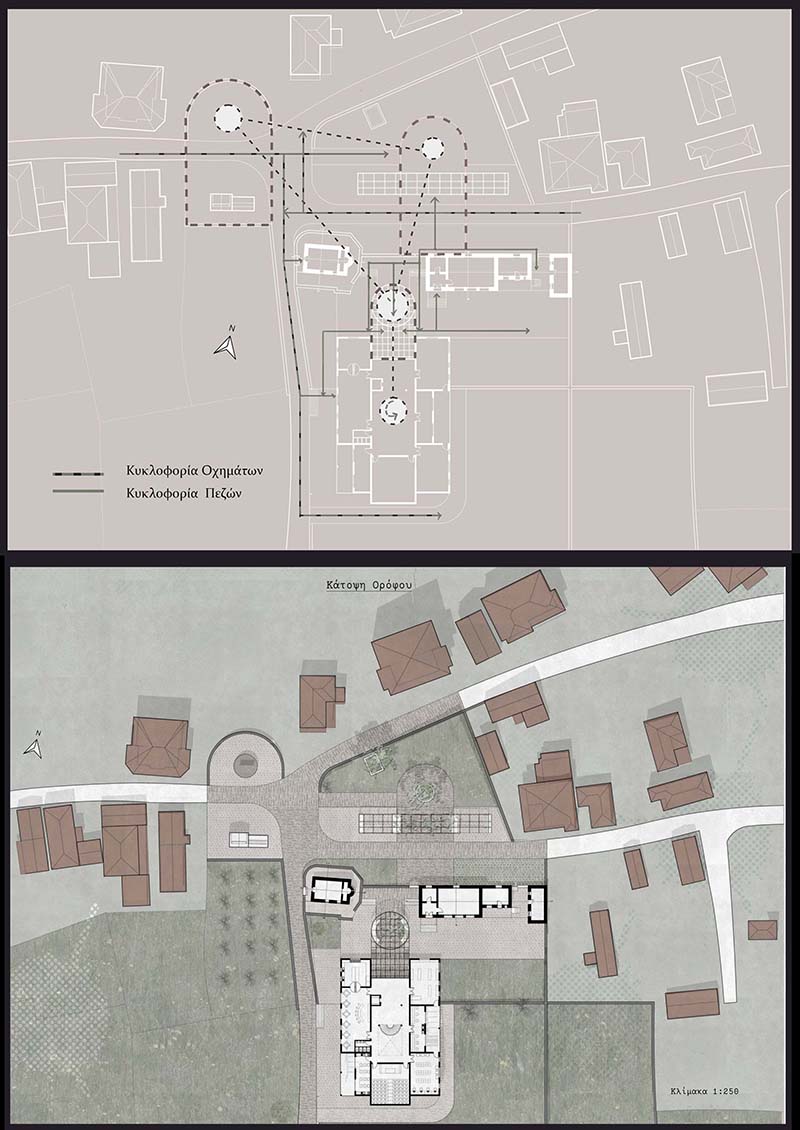

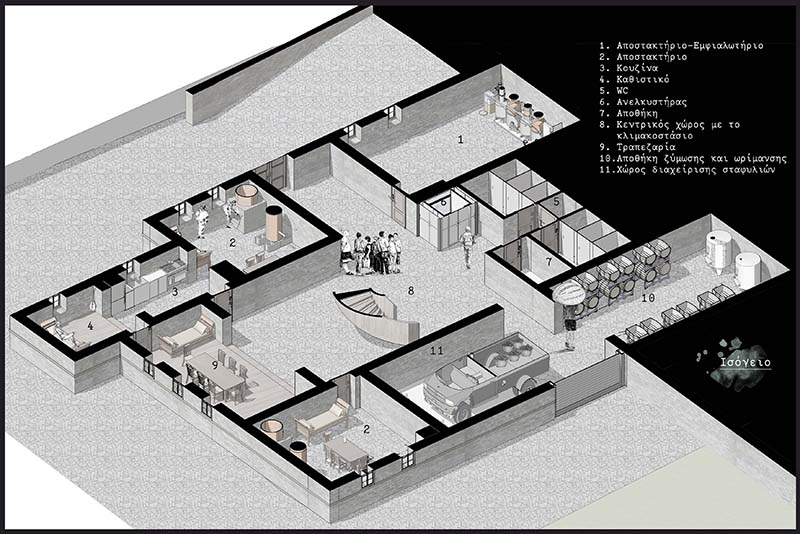

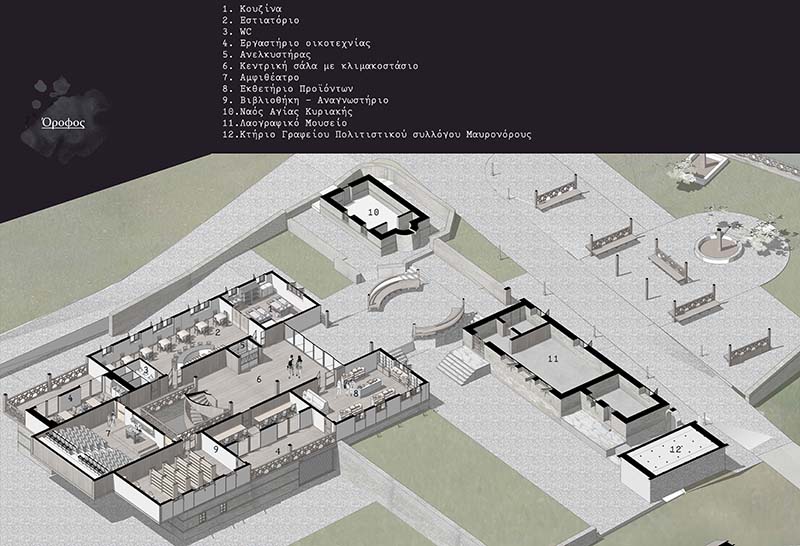



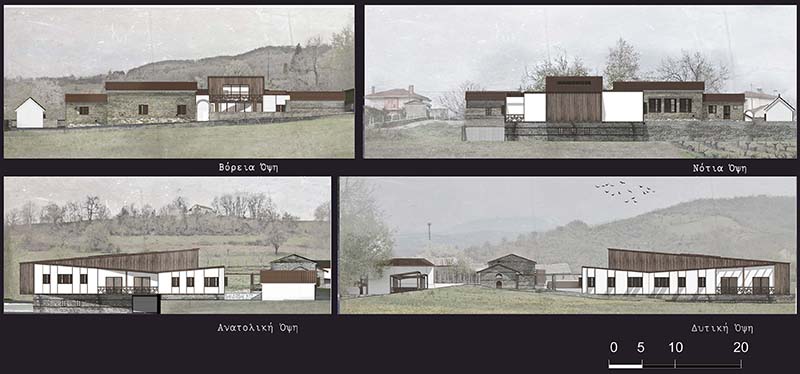

This thesis concerns the configuration of the facilities for the accommodation of the agricultural cooperative of a historical village of Western Macedonia, Mavronoros, which is located 13 km from the city of Grevena. The main objective of this study concerns the distillation of tsipouro, which historically is a social event in our country. The overall aim is to highlight the production process as a means of socialization, while the conceptual issues addressed in this study, are the role of work in the socialization of the individual, the boundaries between the domestic and the workplace, the integration of the traditional element in today's context and the importance of support and training of producers in the Greek territory.
The study also includes the re-shaping of the wider area, which is the 'heart' of the settlement and a large part of local history. The study area includes the site of the old distillery, the central square of the village, the old school, which is intended to serve as a folklore museum, and a 15th century church.
The new building includes distillation and winemaking facilities, cottage industry workshops, a restaurant, An exhibition room for the cooperative's products, an amphitheatre for seminars on production and a library. There are also spaces that belong to a conventional house, such as the kitchen, dining room and living room, but which are directly related to the production process. It is a two-storey structure with a loft, which draws on themes from the understanding of Macedonian architecture, but without being content with simply copying its morphology.
Supervisor: Micocci Fabiano
Reference Number: 1025


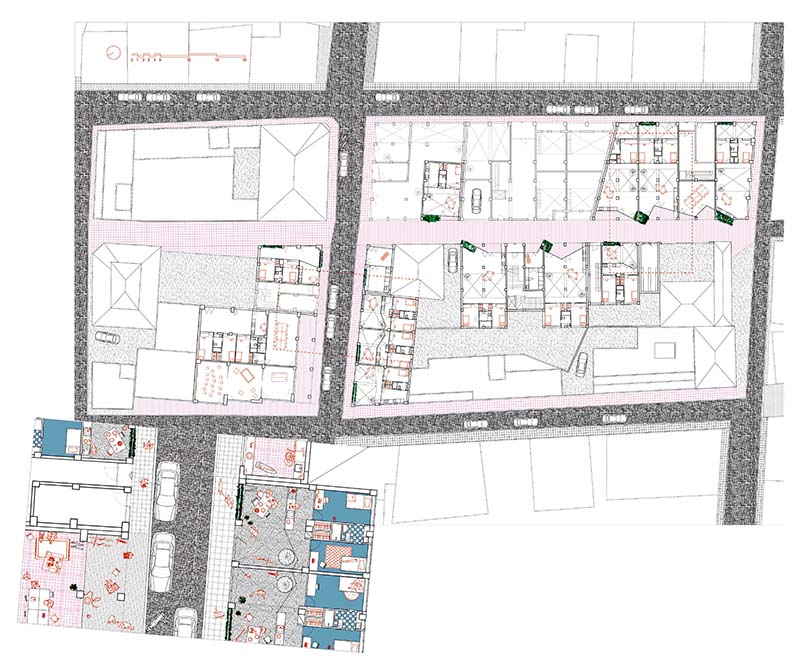

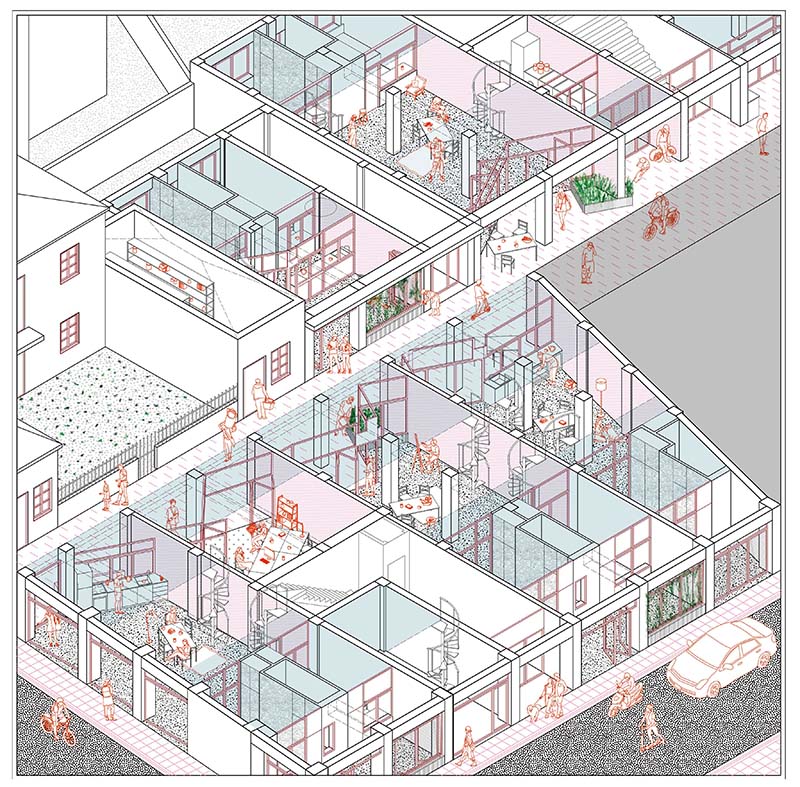

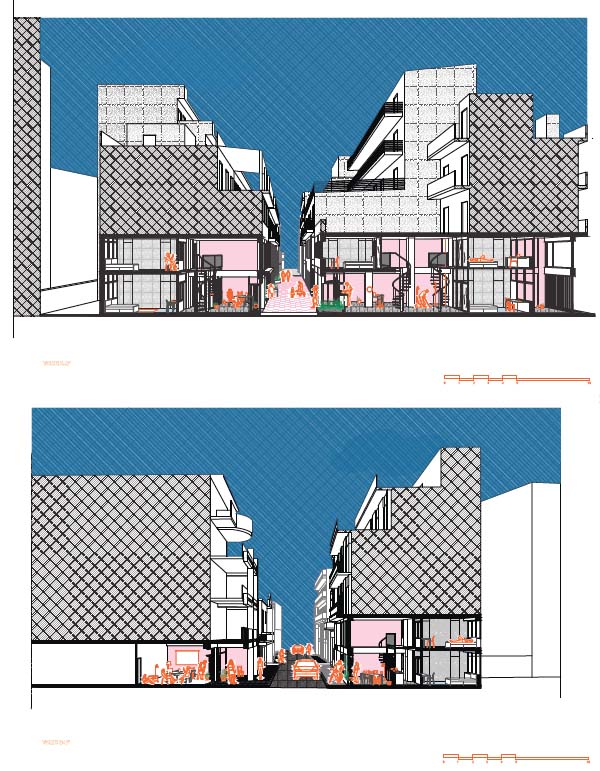

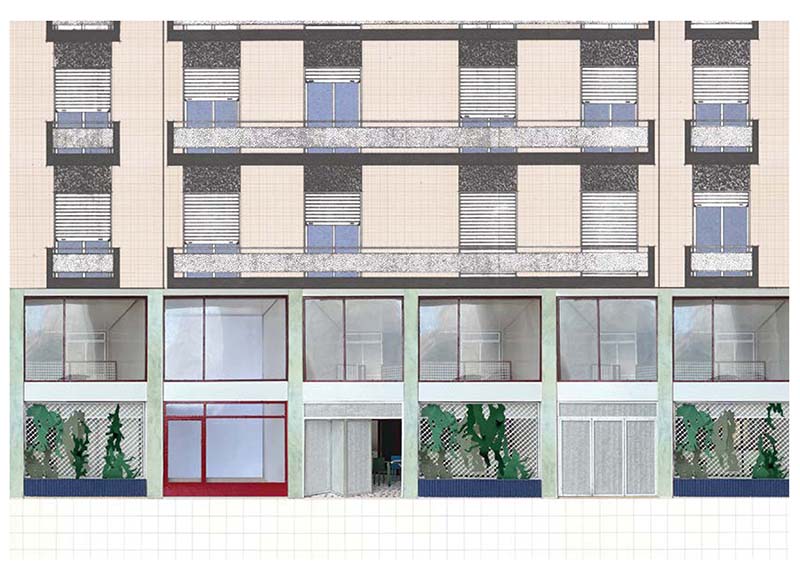

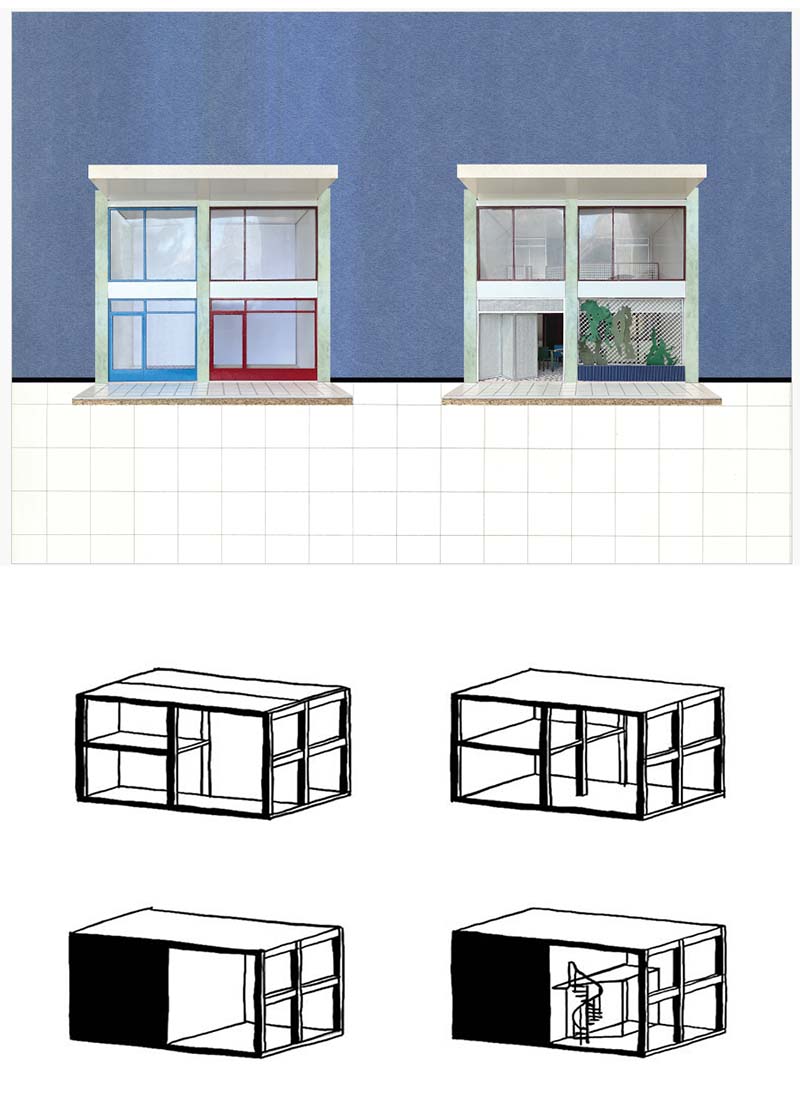

In recent years, in the city of Volos, empty shops have been converted into ground-floor residences. Shop windows are replaced by walls, with doors and windows. In the earlier Research project it was examined who first tries living in these ground floor spaces, usually students or young people. This, in combination with the housing problem due to the rise of the property market and the lack of accommodation for students in Volos gave us the idea of converting ground floor shops into student residences.
Our proposal concerns an alternative model of student accommodation, scattered throughout the city, piloting a different version of the reuse of this building stock. Specifically, it is proposed that ground floor spaces should be converted into homes at the crossroads of 28th October Street and Sefel Street. Starting from there, and examining the different typologies of shops, the proposal could be an applied example that spreads through the city.
It is proposed to create student accommodation based on the principles of cohabitation, and shared space and time. Planning a network of spaces in the city simultaneously constructs a dense network of human relationships. In terms of design, adjacent ground-floor properties are joined to create one single space. Bedrooms and bathrooms are situated at the back, while at the front are intermediate, semi-outdoor, communal meeting spaces that function as a bridge between the privacy of the bedroom and the public street. By placing students on the ground floor, we envisage that the street will be revitalised and the sense of neighbourhood strengthened.
In order to examine the condition of the proposed student accommodation, we looked for a ground floor property that had been unoccupied for many years. A suitable property was found, and we were given permission to use it for three months. This particular ground floor property is an integral part of this Dissertation, as we converted part of it into one of the proposed spaces in the design under real-life conditions.It became a meeting place for us and our friends. The abandoned space was made active, always open, hosting many activities, and a multitude of people and things.
Supervisor: Mitroulias Giorgos
Reference Number: 1017
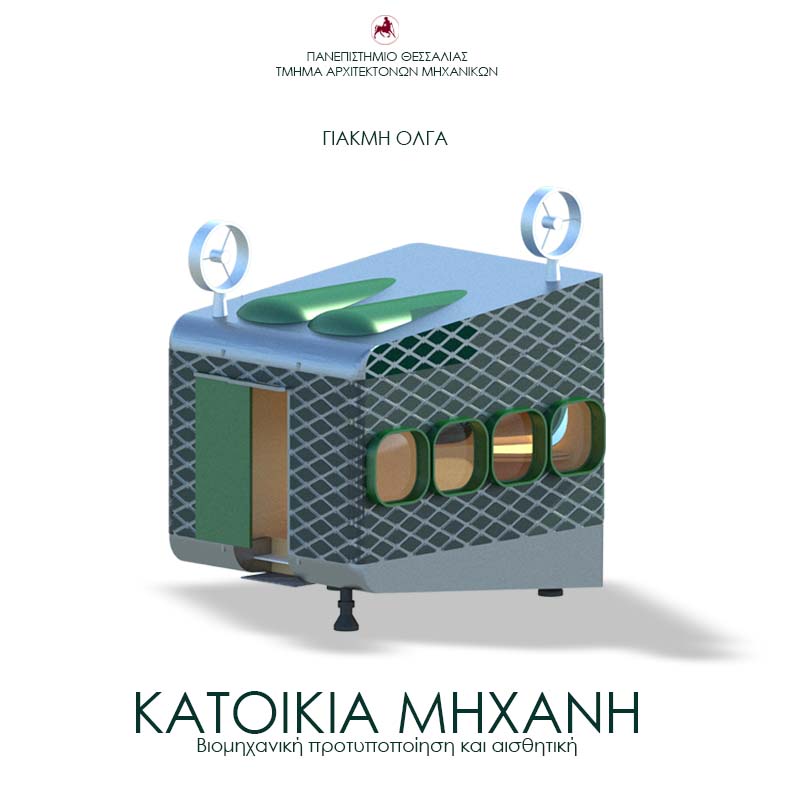

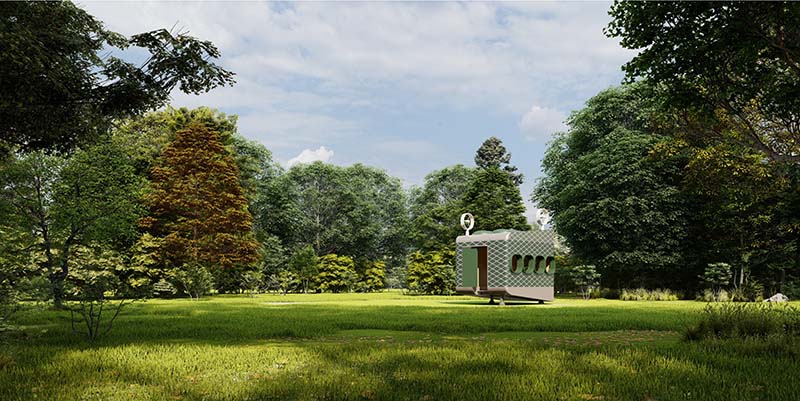

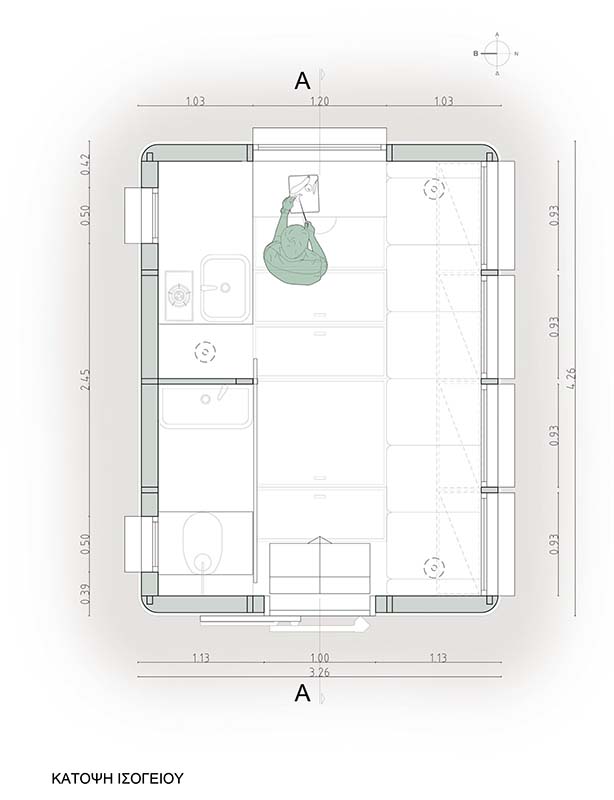



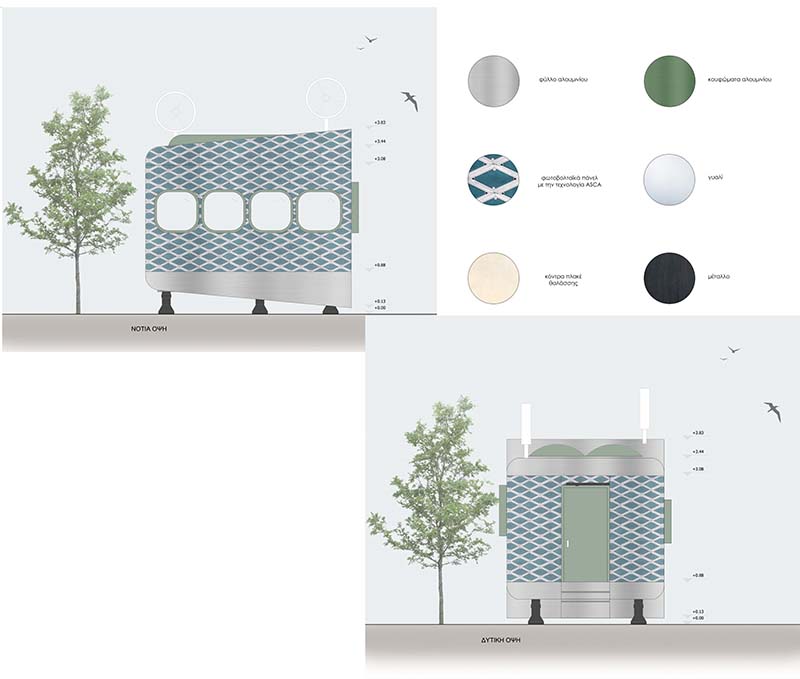

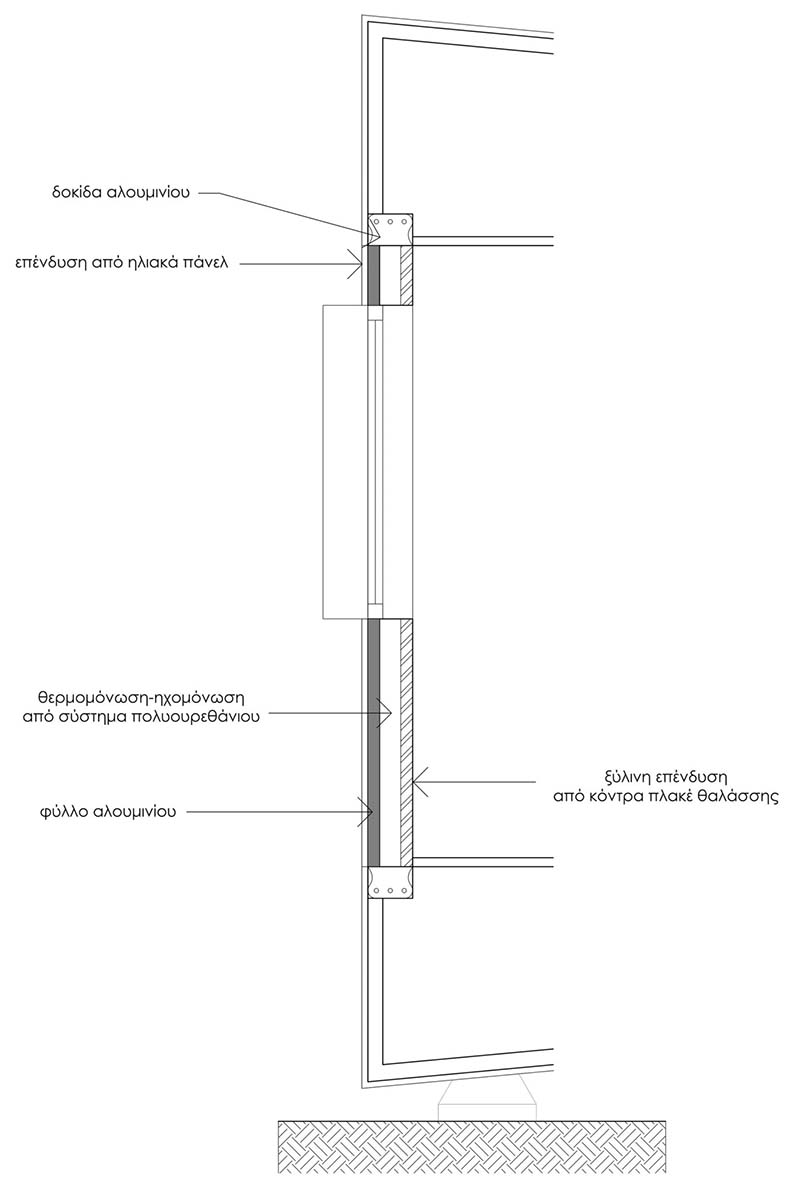

The purpose of my project is the regular theoretical and design analysis and answer to the question “How can an integrated-functional micro-dwelling be designed to be produced by an industrial method “en masse”.
Each residence is usually customized or needs to follow exactly the needs or desires of its occupant. The proposed construction, the result of study, technical negotiation, and design economic-ecological options, can be mass-produced, in individual discrete parts and then assembled with a simple technical “in-line” process. The fluctuation of its height, the alternative ways of supplying and storing water and energy (gas, electricity) as studied and designed provide autonomy for a period of 8-10 days and allow it to be placed on gentle ground slopes, different landscapes-places, protecting the /the resident from excessive weather conditions. The complete and accurate design proposal - placement of devices, systems, storage spaces, mechanisms, allow the temporary comfortable accommodation of additional people.
The study resulted in the comprehensive critical description of the idea for the possible synthesis of integrated even forms where the inventions of modern technical culture are combined in the industrial production of housing units, with limited, ecologically sufficient, cost, and standardized, flexible in variations construction. The technical-aesthetic tactics of composition of all the individual elements that make up the complete housing unit were examined and described.
Supervisor: Stylidis Iordanis
Reference Number: 998


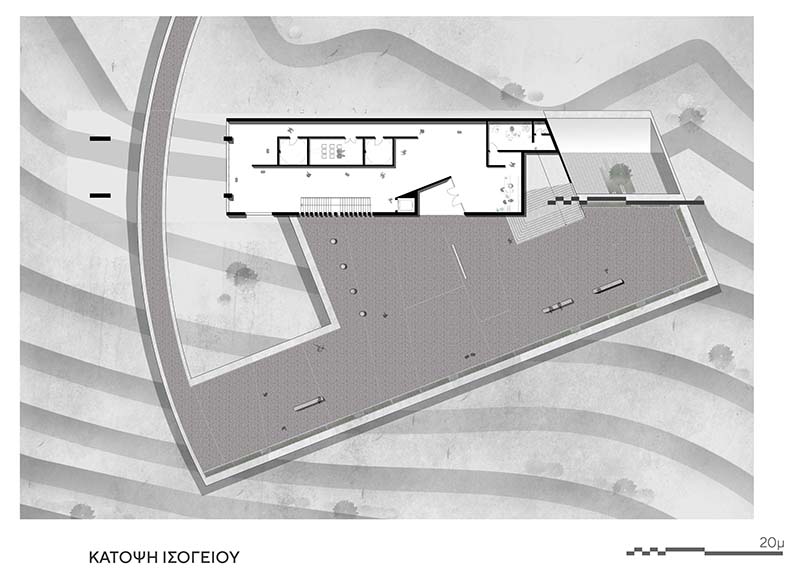

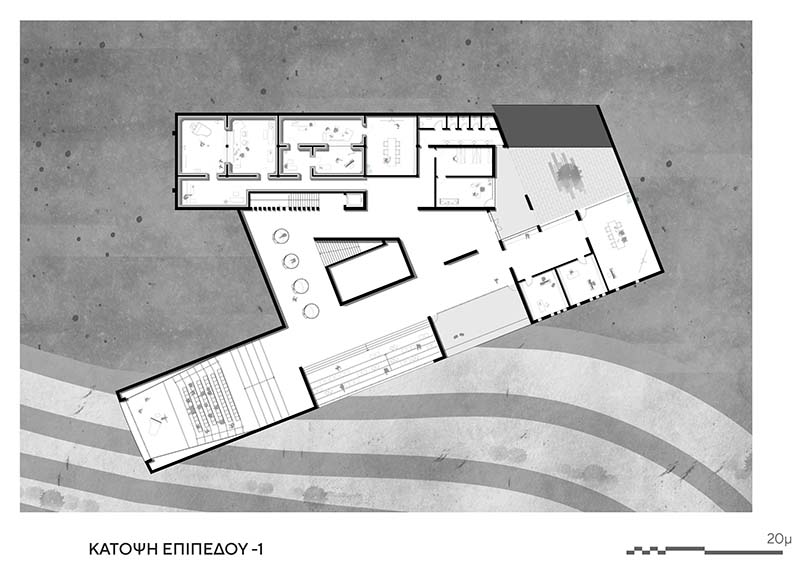

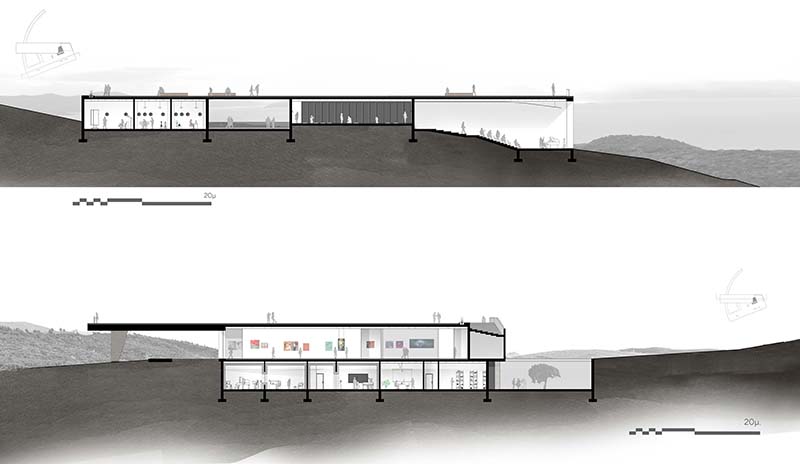



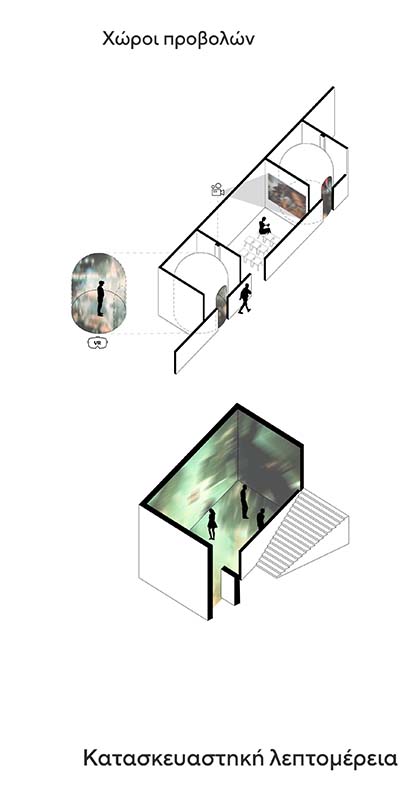

The theme of this Diploma project thesis is inspired by the work of the great artistic personality of the music composer Vangelis Papathanasiou, internationally recognized with the name “Vangelis”, born in Agria of Volos. The cultural contribution of Papathanasiou is enormous, with global scale and a musical compositional attitude unique in this field. His work was particularly successful in the film industry and in accompanying space exploration missions of N.A.S.A. and E.S.A. The purpose of this project is the design of a building highlighting the work of Vangelis in the wider area of his birthplace, which will offer the opportunity for visitors to know his work as well as for young artists to be inspired and create new music compositions in his place of origin.
The structure of this design booklet includes five chapters. The first presents a brief survey of Vangelis' musical personality and the second chapter attempts to connect architecture with musical composition in order to discover their common grounds and through them to highlight interrelated principles and characteristic elements. The third chapter presents the architectural program and design of the building with a given name Center for Musical Experience and Creation. This chapter elaborates on the selection principles of the location site, the assumptions of the architectural design and the analysis of drawings and 3d images. The fourth chapter refers to the building materials of the design while the next fifth to the construction details of the building. The last sixth chapter is the bibliography and at the end an appendix is presented where it includes additional material of progress of the architectural design.
Supervisor: Manolidis Kostas
Reference Number: 1012


